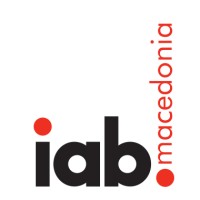Почитувани читатели на Маркетинг365, особено задоволство и чест ми е што денеска на блогов имам едно мини-интервју со светски познатиот маркетер, често нарекуван “гуру“ на Социјални медиуми, мојот колега Брајан Солис ! Брајан( @briansolis ) е еден од најпознатите светски маркетери, автор e на две книги “Engage” и “The End od Business As Usual” , истакнат блогер и еден од најцитираните експерти на денешницата од теми блиски на маркетинг, Односи со јавност и Социјални Медиуми.
Ова е прво интервју на Брајан Солис за македонски медиум. Со него контактираме извесен период, пред се за некои работи за кои тој пишува во неговата најнова книга “The End od Business As Usual” …што ни беше како повод да го поканам да биде гостин на Маркетинг365 и ни каже повеќе околу своето последно дело !
Интервјуто е на англиски…. се надевам нема да ми замерите
Marketing365 : Brian, you recently have published your new book “The End of Business as Usual” .Can you give us any brief highlights, a plot summary or points that make it interesting?
Brian Solis : Boris, where can I possibly begin? For those who have followed me over the years, you will find that the book is a bit of a departure from my focus on social media. That’s because this book is more important than just exploring the impact of social networks in our personal and professional lives.
The End of Business as Usual explores the evolution of consumer behavior and how technology is accelerating what I refer to as Digital Darwinism, the state of organizations when technology and society evolve faster than their ability to adapt.
The evolution of consumer behavior forces organizations to compete at an entirely new level. New media is changing how customers discover, communicate, and connect. The effect of social networks, smart phones, tablets, portable wifi access points, creates an always-on culture that influences and is influenced differently than the traditional customers of the past. How they make decisions is different. How they learn is different.
We are in a market in transition and that complicates consumer engagement strategies as this connected consumer represents only one facet of consumerism. This part is important. Organizations still need to compete for mind and market share of traditional customers. A balance is needed because there is no going back. The consumer landscape is now dynamic and as such, businesses must now rethink strategies and supporting models.
The fight for consumer relevance now carries greater stakes. Relevance is both a measure of consumer engagement and also aspirational in what businesses must always pursue to survive and matter now and in the long term.

Marketing365 : We`ve heard about Generation X and Generation Y, but in one of your latest articles on your blog , you are talking about “Generation C”. Can you tell us briefly something more about “Gen C” ?
Brian Solis : Generation Y or the Millennial is often thought to be the culprit of consumer transformation. They are certainly a significant part of it. Gen Y after all is the first generation that has digital DNA at birth. But they’re not the only catalysts of transformation.
As the book points out, at the heart of the matter is technology and how it affects behavior. Whether you’re Gen-Y, Gen-X, or if you’re a Boomer or Mature, once you embrace the digital lifestyle, you live the digital lifestyle. And, as a result, behavior takes on similarities that span across generations forming something that I believe creates a new class of connected consumers. The “connected” aren’t bound by age or any other demographics, but instead psychographics. Shared interests combined with living the digital lifestyle form Generation-C, where “C” represents connectedness.
To pursue Generation C requires an augmented approach in how you currently pursue traditional customers. It’s part philosophy, part technology, and part research and learning. The first half of the book explores Generation-C, patterns in their behavior and also introduces readers to the “new sales” funnel. New touchpoints are emerging and as such, requires new channels and strategies to reach connected consumers pre-, during, and post-commerce. The second half of the book is prescriptive. It walks through a series of steps and models to adapt. By the end of the book, you will learn how to engage Generation-C and transform business processes and the prevailing culture to inspire employees, customers, and increase relevance for a new era of business.


















